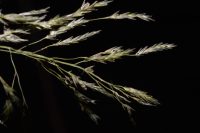|
Eragrostis tenuifolia (A.Rich.) Hochst. ex Steud., Syn. Pl. Glumac. 1: 268 (1854) (syn: Eragrostis parviglumis Hochst. ex Steud. ; Eragrostis tenuifolia var. polytricha Peter ; Poa tenuifolia A.Rich.);
. Angola, Assam, Bangladesh, Burundi, Cameroon, Cape Provinces, Central African Repu, Chad, Congo, Djibouti, Eritrea, Ethiopia, Free State, India, Kenya, KwaZulu-Natal, Madagascar, Malawi, Mozambique, Myanmar, Nigeria, Northern Provinces, Oman, Rwanda, Réunion, Sri Lanka, Sudan, Swaziland, Tanzania, Thailand, Uganda, Vietnam, Yemen, Zambia, Zaïre, Zimbabwe; Introduced into: Argentina Northeast, Argentina Northwest, Bolivia, Borneo, Brazil South, Brazil Southeast, Brazil West-Central, Canary Is., Chile Central, Colombia, Cook Is., Costa Rica, Easter Is., Ecuador, Egypt, El Salvador, Galápagos, Great Britain, Guatemala, Honduras, Jamaica, Jawa, Lesser Sunda Is., Madeira, Malaya, Mauritius, Mexico Central, Mexico Southeast, Mexico Southwest, New Caledonia, New Guinea, New South Wales, Nicaragua, Northern Territory, Panamá, Peru, Philippines, Queensland, Sumatera, Taiwan, Tasmania, Trinidad-Tobago, Venezuela, Western Australia, Windward Is. as per POWO; .
Annuals or perennials; culms tufted, 20-60 cm high, erect. Leaves 15-25 x 0.2-0.5 cm, linear; base rounded; sheath rounded; ligule a rim of membrane. Panicle 10-20 cm long, effuse, glabrous. Spikelets 0.5-1.3 cm long, linear-oblong, serrate; glumes similar, ovate-lanceolate, 1-nerved; florets 10-18, all bisexual; lemmas 2.25 x 1.5 mm, broadly ovate, mucronate, greyish black; palea curved, truncate at apex, persistent; anthers 1 mm long. Flowering and fruiting: March-September
Wet areas in wastelands
Tropical Africa and South India
(Attributions- Dr. N Sasidharan (Dr. B P Pal Fellow), Kerala Forest Research Institute, Peechi from India Biodiversity Portal)
. ANOCT28 Please identify this grass (2) : 6 posts by 4 authors. Attachments (6).
Bangalore outskirts It is a species of Eragrostis, Bangalore out skirts one species of Eragrostis, 4 feet tall and cultivated as fodder grass. Is it Eragrostis minor? efi page on Eragrostis minor This is Eragrostis tenuifolia. The characteristic feature is a gladular patch in the middle part of the pedicel of each of the spikelet clearly visible in IMG_7230.jpg. The lemmas have a small mucro at the tip and the lateral nerves are not visible. The IMG_7230 tells it all. Thank you very much … I will certainly be able to identify this grass from now on. ,   SD021 Plant ID assistance : 5 posts by 2 authors. 2 images Kindly assist with ID of this grass. Clicked 30th Aug, 20. Found in New Delhi Eragrostis curvula POWO does not give its distribution here. Chrysopogon zizanoides (Vetiveria zizanoides) Eragrostis tenuifolia in the foreground and Chrysopogon (Vetiveria) zizanoides in the background . MS, July, 2023/03 Poaceae for id: 1 image.
Location : Aizawl, Mizoram Altitude : ca 900 m
Date : 13-07-2023
Habit : Grass
Habitat : Wild Pl. post a high res. image to see the details. Eragrostis tenuifolia – The persistent paleas and pedicels of spikelets with a glandular patch are the striking identification features of this perennial grass. ANOCT66 Poaceae for identification (2) : 3 posts by 2 authors. Attachments (2).
Bangalore outskirts Eragrostis cilianensis (All.) Janch (= Eragrostis major Host) Eragrostis tenuifolia . SK 2765 28 September 2020 – Grass : 12 posts by 3 authors. 5 images- 6 to 7 mb each. Date: 14 September 2020
Elevation: 1340m.
Habit: Wild
Check with Capullipedium I was wondering since Glyceria acutiflora subsp. japonica is not listed in Nepal.
Capillipedium sp. is listed in Nepal but I could not make out which one among the
two sp. Capillipedium parviflorum (R.Br.) Stapf and Capillipedium assimile (Steud.) A.Camus. ??
Must need to go through keys … Glyceria tonglensis C. B. Clarke is listed in checklist of Nepal.
May be close as per FOC illustration compared to Glyceria acutiflora Torrey subsp. japonica (Steudel) T. Koyama & Kawano
However, only … can confirm. Enclosing link for Capillipedium which are listed in Nepal.
FOC illustration on the right side is Glyceria acutiflora ssp. japonica. It should be a new report for Nepal. This is neither Glyceria nor Capillipedium; it is Eragrostis tenuifolia. If you zoom the spikelets of DSC_0768 you can clearly see that the lemma has only 3 nerves (midrib and one side nerve clearly visible and the third nerve is on the other side. The lemmas are also keeled. In case of Glyceria there would be 5-9 nerves on the lemma and the back of lemma is not keeled. Capillipedium is an entirely different genera belonging to Andropogoneae and has clusters of small awned spikelets on capillary branches. .
Location: Chobhar, Kathmandu, Nepal
Date: 03 September 2024
Elevation: 1400m.
Habitat : Wild
Eragrostis tenuifolia – It should be having a glandular patch at the centre of most of the pedicels of the spikelets, though not clearly in photograph, it may be clearly visible in live plant.
. References: |























